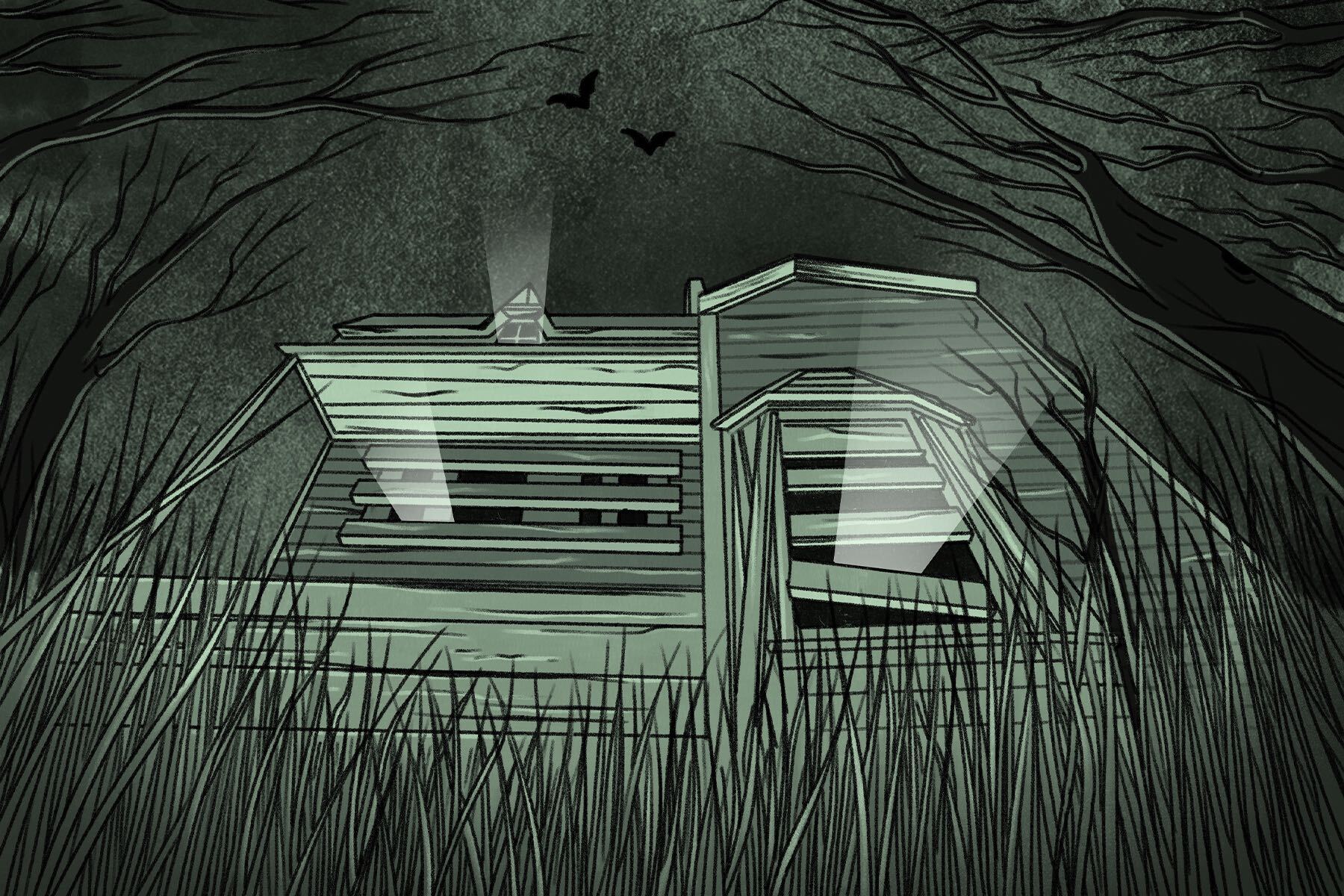Because COVID-19 is still running rampant in the United States, this upcoming Halloween may be the strangest one yet The new horror game Phasmophobia recently released on Steam, however, can help you fully enjoy the holiday with friends by going ghost hunting virtually while staying socially distanced.
What is Phasmophobia?
Phasmophobia, the fear of ghosts, is an ironic yet fitting name for what the game is all about — ghost hunting. Released for early access on Sept. 18 by Kinetic Games for PC, Mac and VR users, this co-op psychological horror game offers a new hope for a fun Halloween when going outside still poses an imminent threat.
The player, along with three other people, are paranormal investigators who visit an abandoned location to figure out what type of ghost haunts it, ideally without anyone dying in the process. By using live CCTV footage, activity sensors, ghost hunting devices and flashlights, the team explores the chosen location to gather evidence of any paranormal activity.
At the beginning of the simulation, the players appear in a lobby where they can add items onto an equipment list, upping their chances of survival. As everyone waits for the rest of the team to “ready” up and the host to decide on a location, a quick game of virtual basketball and stacking spray paints may soothe the anxious nerves of those unprepared for the upcoming jump scares.
So far, only seven maps exist within the game — five labeled small, one medium and one large. According to the developer on their public Trello outline, a future update will include three new locations — an apartment building, a prison and a mansion. Hopefully, future updates will include medium or large maps to compensate for their current scarcity.
After the whole team leaves the lobby and spawns into the ghost hunting van, a list of objectives will display on the whiteboard to guide the players on what they need to do. The main objective is to accurately classify the ghost by using the journal that each individual player can access, followed by three optional objectives that range in difficulty.
Optional objectives include photographing dirty water in a sink, capturing a photo of the ghost, having a member of the team witness a ghost event and using a crucifix to prevent the ghost from hunting. These are completely random and are meant to give the players a chance to earn more money each round. Who wouldn’t want the chance to pick up a couple of extra dollars after risking their lives?
A Guide To Identifying a Ghost Without Dying (Hopefully) in Phasmophobia
Although there is no guarantee that someone will not die using these methods, the chance of keeping everyone safe and retaining purchased equipment for future rounds is fairly high if you play strategically. Ghost hunting gear can be expensive depending on the item, and if the buyer dies with the equipment they bought, the equipment disappears with them. To avoid this outcome, try following the tips below.
Separating the Crew Into Teams For Successful Ghost Hunting
While two or three team members explore the location for the mission’s duration, one or two members stay behind in the van to monitor the cameras, sanity levels, ghost activity level and motion sensors — preferably the members who purchased most, if not all, the equipment. Those who stick behind have a lower chance of being killed by the ghost, which means that the expensive equipment they paid for will not be lost.
Of course, the entire purpose of the game revolves around immersing the players in a spooky location to witness paranormal sightings; however, monitoring the ghost and the rest of the team from the sidelines can be just as terrifying. Imagine seeing a ghost pop up on the monitor without warning, chasing one of your fellow investigators, or simply throwing things across the room. That can get your adrenaline pumping.
Purchasing Equipment To Go Ghost Hunting More Easily
After establishing who will be explorers and the observers, determining which equipment to buy is equally as important. Buying the right equipment helps players classify the ghost quicker by reducing the need for guesswork.
Upon purchase, Phasmophobia automatically provides players with starter equipment; however, players will need a lot more than that. For explorers, regular flashlights should be replaced with stronger flashlights to give them a better look at their surroundings. Head-mounted cameras allow observers to see the location through the explorers’ eyes, and ideally capture ghost sightings and ghost orbs to accurately classify the ghost. Tripods and video cameras provide the same function, except they remain stationary wherever the player places them down.
Sanity pills are a must for explorers who investigate the location from the inside. A low sanity percentage heightens the chance of a ghost directing a ghost hunt and going after vulnerable players. Paranormal activity is more likely to happen when the sanity levels of the players go below 50%, therefore keeping it above that percentage is ideal — unless the players want to provoke the ghost into revealing itself. Being scared makes the game worthwhile, after all.
Motion sensors and sound sensors assist with finding the ghost’s whereabouts since it frequently sticks to one room or area the entire duration of the game. After setting up these sensors, observers can monitor the activity board and live map to alert the explorers when sudden sounds or movements occur in a specific area.
Purchasing a thermometer aids in finding the location of the ghost, since low temperatures indicate its presence. Unfortunately, the game does not supply this essential tool in the starter kit, but spending the $30 on it will be money well spent.
Other equipment such as smudge sticks, lighters to light them and crucifixes can scare away a ghost and prevent them from entering a hunt. The hunt is signaled by players’ flashlights flickering on and off repeatedly, but purchasing a few of these tools heightens the chance of surviving. The more, the better — though crucifix purchases are capped at two and smudge sticks at four.
Knowing Your Ghosts
Now with two established teams and newly purchased equipment, accurately classifying the ghost is the first and main priority. By using the journal every player has access to, investigators can narrow down the type of ghost they are dealing with, hopefully before it starts to hunt.
Twelve ghost types exist in Phasmophobia’s world: phantom, banshee, jinn, revenant, shade, oni, wraith, mare, demon, yurei, poltergeist and spirit. Each ghost possesses different strengths, weaknesses and unique traits; however, they all share something in common — a terrifying appearance. If the idea of entering the location does not scare you, the visuals of these ghosts are enough to send a chill down your spine.
While explorers report the evidence found at the scene, observers should access the journal, input the newly discovered information and report back with the possible ghost they are encountering. Explorers should stay together unless it is absolutely necessary to separate — some ghosts only respond to people when they are alone, which makes the experience even more frightening.
What Makes Phasmophobia One of The Best Horror Games
Phasmophobia provides players with a local voice chat and global voice chat to immerse them in the role of a paranormal investigator. Talking through a walkie-talkie instead of using an alternate platform to communicate with others heightens the experience drastically.
Players can also talk to ghosts and hear their responses, making the experience both better and more terrifying. They can communicate with ghosts through the spirit box, a crucial piece of equipment provided in the starter kit that can be used to ask them questions. However, some ghosts will only give one-word answers — some answers like “behind, die and kill” are enough to incite panic. Talking to the ghost and asking it questions to rouse a physical response remains entirely possible as well — asking it to open a door, write in a notebook or “give a sign” are some options, though it is up to the ghost to deliver a reply.
At the start of the mission, along with the objectives listed, the ghost’s name will be provided, giving players a chance to provoke the ghost and spike its activity level by calling out to it. Ideally, this method should only be used when not many clues are available; however, it does not hurt to get a wild ghost chase going for some excitement.
Phasmophobia with a group of friends rouses laughter and screams from the thrill of virtual ghost hunting—but if the location’s spooky visuals and ghostly sounds are not scary enough, perhaps the sight of your flashlight flickering will suffice.

















